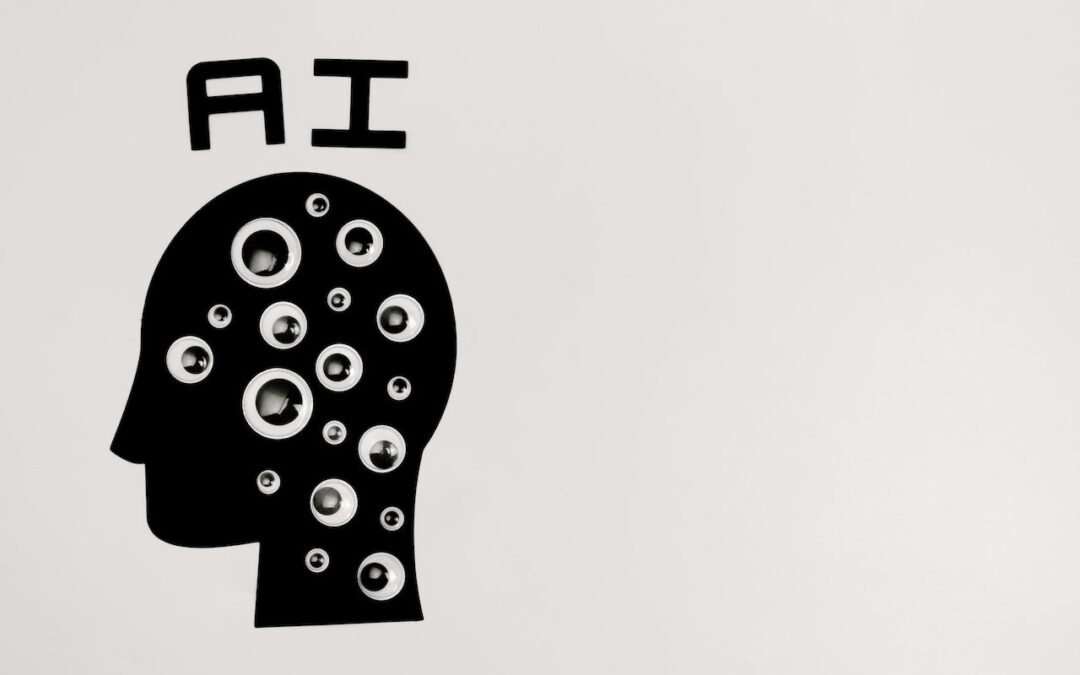Empowerment Through AI: Navigating ADHD Challenges with Skill and Support
Navigating the demands of our fast-paced world often requires a skillful balance of planning, organization, time management, and effective communication. Yet, mastering these executive functioning skills can sometimes feel like an uphill battle. Enter artificial intelligence (AI), a powerful technological tool that not only provides answers but also collaborates with you to enhance your skills. In a world where staying on top of tasks and managing time can be quite the challenge, AI steps in as a trusty sidekick, offering guidance and insights. From helping you map out plans to simplifying tasks and even sharpening your communication skills, AI has your back. In the following read, we’re about to embark on a journey uncovering 10 remarkably ingenious ways AI can supercharge your executive functioning skills and elevate your performance. And that’s not all—this blog post will also include invaluable tips on how to best interact with AI to refine responses and make the most of this collaborative partnership. So, let’s strap in and discover the exciting ways in which AI can empower you to reach new heights of efficiency and success.
Harmonizing Human Ingenuity with AI Power: The Unrivaled Magic of Collaborative Interaction
 While AI offers incredible capabilities to support and enhance various aspects of our lives, it’s important to note that AI does not aim to replace the essence of human interaction and decision-making. The true magic lies in the synergy between humans and AI. While AI can provide efficient solutions, streamline processes, and offer valuable insights, it lacks the depth of human empathy, creativity, and critical thinking. The human touch is irreplaceable in understanding nuanced emotions, adapting to unique situations, and making complex ethical judgments. In essence, AI acts as a tool that empowers individuals, enabling them to make more informed decisions and achieve higher levels of productivity. The real value emerges when humans and AI work hand in hand, combining the strengths of both to create a holistic and enriched experience.
While AI offers incredible capabilities to support and enhance various aspects of our lives, it’s important to note that AI does not aim to replace the essence of human interaction and decision-making. The true magic lies in the synergy between humans and AI. While AI can provide efficient solutions, streamline processes, and offer valuable insights, it lacks the depth of human empathy, creativity, and critical thinking. The human touch is irreplaceable in understanding nuanced emotions, adapting to unique situations, and making complex ethical judgments. In essence, AI acts as a tool that empowers individuals, enabling them to make more informed decisions and achieve higher levels of productivity. The real value emerges when humans and AI work hand in hand, combining the strengths of both to create a holistic and enriched experience.
Accessing AI and Choosing the Right Fit: Exploring Options
When it comes to harnessing the power of AI, there are several remarkable options available, each catering to different preferences and needs. ChatGPT, Bard, and Pi are among the standout choices, each offering a unique approach to interacting with artificial intelligence.
ChatGPT is like having a conversation with a knowledgeable companion. Its versatility shines through in its ability to engage in a wide range of discussions, answer questions, and assist with writing, making it a go-to choice for diverse interactions.
Bard is your creative companion, particularly suited for generating poetry and storytelling. Whether you’re seeking to spark your imagination or delve into the realms of artful expression, Bard is designed to bring out your inner poet and storyteller.
Pi is not only adept at technical discussions but also excels in emotionally supportive conversations. With the ability to listen, understand, and respond to your feelings, Pi serves as a companion for personal and emotional interactions. Its empathetic nature makes it an ideal choice for processing emotions, providing a virtual shoulder to lean on during both challenging and joyful moments. Whether you’re seeking advice, sharing thoughts, or simply looking for a comforting presence, Pi is there to lend its empathetic ear.
 Understanding the distinctions among these AI models empowers you to choose the one best aligned with your intentions. Whether you’re engaging in insightful conversations, crafting eloquent prose, or diving into programming intricacies, each AI brings its unique magic to the table. So, as you embark on this AI-powered journey, consider your objectives and select the AI that resonates with your aspirations.
Understanding the distinctions among these AI models empowers you to choose the one best aligned with your intentions. Whether you’re engaging in insightful conversations, crafting eloquent prose, or diving into programming intricacies, each AI brings its unique magic to the table. So, as you embark on this AI-powered journey, consider your objectives and select the AI that resonates with your aspirations.
Using AI to Boost Your Executive Functioning: 10 Helpful Tips!
1. Estimating Task Time with AI
Have you ever found yourself wondering how much time that project or set of chores might take? AI can be your virtual timekeeper. By tapping into AI tools, you can predict how long tasks might take, aiding you in planning your day more accurately.
For instance, when faced with a pile of tasks, you can inquire, “How much time should I set aside for this report?”
2. Crafting Emails and messages with AI’s Guidance
Composing emails can be a challenge, especially when finding the right words. That’s where AI lends its helping hand.
If you’re struggling with the introduction of an email to your supervisor regarding a project update, simply ask, “Could you assist me in starting an email to my manager about the latest project developments?”
3. Optimizing To-Do Lists with AI
Maintaining well-organized to-do lists is made effortless with AI’s intervention. AI can assist you in identifying priorities and deciding where to begin.
If your to-do list appears overwhelming, you can inquire, “What task should I prioritize first?”
4. Simplifying Complex Concepts with AI
Encountering perplexing subjects? AI can simplify intricate ideas into comprehensible explanations.
For example, if you’re seeking a straightforward explanation of space travel, you could ask, “Can you break down the concept of space travel in simpler terms?”
5. Enhancing public speaking through AI
Delivering impactful presentations becomes easier with AI’s support.
When you’re gearing up for an important work presentation, you can tap into AI’s strengths by asking, “Could you help me with improving the quality of my upcoming presentation for the company?
6. Breaking Down Projects with AI
Tackling sizeable projects can be daunting, but AI can break them into manageable portions. Additionally, AI provides insights into time requirements for each segment.
If you’re getting ready to plan a vacation, you can enlist AI’s help by inquiring, “Could you help me with breaking down and organizing the steps for planning my vacation?”
7. Overcoming Procrastination with AI
Do you often find yourself procrastinating before beginning tasks? AI can provide that gentle nudge to initiate activities.
When faced with the reluctance to start a history assignment, you can say, “Help me overcome procrastination and begin my work assignment.”
8. Conquering Avoidance Patterns with AI
AI can identify patterns of avoidance and suggest strategies to overcome them.
If you’re avoiding practicing something, for example, the piano, AI can offer guidance. Open up with, “I’m finding it hard to practice the piano. What steps can I take to overcome this?”
9. Effortless Meal Planning thanks to AI
AI streamlines meal planning by suggesting recipes based on your preferences and ingredients.
Consider saying, “What delicious dinner ideas do you have for tonight’s meal?”
10. Smart Financial Management with AI
AI revolutionizes financial management by creating dynamic budgets. Simply provide your income, expenses, and goals to AI, and it will craft a budget that adapts over time.
Let AI know, “Help me set up a budget for my monthly allowance, considering my spending and savings goals.”
Engaging with AI to Refine Responses: Unveiling the Art
 Interacting with AI isn’t just about asking questions; it’s about crafting an effective dialogue that extracts the best possible responses. While AI’s prowess has grown immensely, its true potential comes alive when users understand how to harness its capabilities through thoughtful prompts and interactions. Here’s an in-depth guide on how to engage with AI and refine responses, making your experience more productive and satisfying.
Interacting with AI isn’t just about asking questions; it’s about crafting an effective dialogue that extracts the best possible responses. While AI’s prowess has grown immensely, its true potential comes alive when users understand how to harness its capabilities through thoughtful prompts and interactions. Here’s an in-depth guide on how to engage with AI and refine responses, making your experience more productive and satisfying.
Be Specific and Clear
AI thrives on clarity. When framing a question or prompt, provide specific context and details. For example, instead of asking, “Tell me about space,” you might ask, “Can you explain the concept of black holes in astronomy?”
Use Open-Ended Questions
For more comprehensive answers, use open-ended questions. Instead of asking, “Is climate change bad?” consider asking, “What are the major environmental impacts of climate change?”
Provide Context
Include relevant information in your prompt to guide the AI. If you’re discussing a technical subject, mention your familiarity level. For instance, “I’m new to coding. Can you explain object-oriented programming principles?”
Ask for Examples
To deepen your understanding, ask for real-life examples. For instance, if you’re learning about literary devices, you could request, “Could you give me an example of foreshadowing in a famous book?”
Experiment with Variations
If the initial response isn’t exactly what you’re looking for, don’t hesitate to refine your prompt using different words or phrasing. AI adapts well to variations. If you’re inquiring about healthy eating, you might try, “What are some tips for maintaining a balanced diet?”
Use Follow-Up Questions
Engage in a back-and-forth dialogue by asking follow-up questions. This can lead to deeper insights. For instance, if you’re researching renewable energy, you could follow up with, “How does solar energy compare to wind energy in terms of efficiency?”
Mix Curiosity with Precision
Combining curiosity with precision can yield rich responses. If you’re exploring a historical event, consider a prompt like, “Can you provide a concise overview of the causes and consequences of the Industrial Revolution?”
Provide Feedback
AI learns from interactions. If you find a response particularly helpful or wish to clarify, provide feedback. This helps AI better understand your preferences over time.
Experiment with Different AI Models
Different AI models have varying strengths. Experiment with different models to find the one that best suits your needs. If you’re looking for creative writing suggestions, you might try a model optimized for that purpose.
Leverage Formatting Tools
When asking for longer responses, use formatting tools like bullet points or numbered lists to structure your question. This can result in more organized answers.
Embracing AI as More Than Information: A Journey of Collaboration
 It’s essential to recognize that AI goes beyond being a mere source of information—it’s a collaborator in your quest for knowledge and solutions. Engaging with AI becomes an art when you learn to guide it toward responses that resonate with your objectives. This partnership requires a thoughtful approach to crafting prompts that extract the insights you seek.
It’s essential to recognize that AI goes beyond being a mere source of information—it’s a collaborator in your quest for knowledge and solutions. Engaging with AI becomes an art when you learn to guide it toward responses that resonate with your objectives. This partnership requires a thoughtful approach to crafting prompts that extract the insights you seek.
Much like honing executive functioning skills, the process involves employing deliberate strategies to optimize AI interactions. Just as you refine your to-do lists and break down projects, refining your prompts is key. By tailoring your inquiries with specifics, using open-ended questions, and providing context, you help AI grasp your needs more accurately.
Moreover, treating AI as a collaborative tool, rather than a one-sided information dispenser, enhances the experience. Experimenting with variations, employing follow-up questions, and offering feedback all contribute to shaping AI’s responses to align with your goals.
Incorporating AI into your routine shares similarities with the strategies employed for optimizing executive functioning skills. From estimating task durations to overcoming avoidance patterns, AI acts as a versatile assistant. Embracing the innovative ways AI offers, you embark on a journey toward heightened productivity and efficiency in your daily life.
Remember, it’s the fusion of your guidance and AI’s capabilities that unlocks its true potential to assist, educate, and inspire you in multifaceted ways. As you embrace this collaboration, you not only harness the power of AI but also refine your approach to achieving excellence.
Begin Online Coaching for Executive Functioning / ADHD
Ready to gain control and enhance your executive functioning? As an experienced and compassionate coach, I specialize in providing support for executive functioning and ADHD. To embark on your journey, please reach out to me at 708-264-2899 or email hello@suzycarbrey.com to schedule a FREE 20-minute discovery call consultation.
With a background as a speech-language pathologist, I have a strong foundation in executive functioning coaching. My graduate degree program in SLP placed a significant emphasis on cognition, including executive functions, and I have years of experience in medical rehabilitation, providing cognitive-communication therapy. Additionally, I have completed an ADHD Services Provider certification program, I am Solutions-Focused Brief Therapy Diamond Level 1 certified and I am trained in the Seeing My Time® executive functioning curriculum.
Experience the convenience and effectiveness of online coaching, backed by studies that demonstrate equal results to in-person services. Parents, professionals, and emerging adults love the convenience and privacy of receiving coaching from their own homes.
Whether you reside in Chicago, Milwaukee, Indianapolis, Kansas City, or anywhere else around the globe, I am here to assist you. Schedule your discovery call consultation today, and I eagerly anticipate the opportunity to work with you!
Please note that although I am a certified speech-language pathologist, all services Suzy Carbrey LLC provides are strictly coaching and do not involve clinical evaluation or treatment services. If you require a formal speech therapy evaluation and treatment, please inform me, and I can provide appropriate recommendations.

